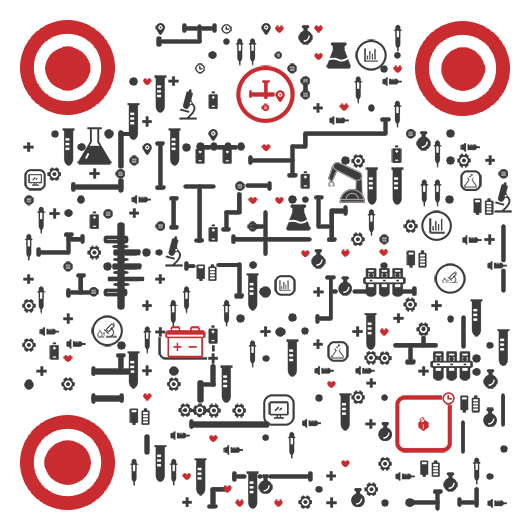Korea Certification
KC Certification
Certification Introduction
KC (Korea Certification) certification, formerly known as EK certification, is a safety certification system for electrical and electronic appliances in Korea, i.e. KC mark certification, which is a mandatory safety certification system implemented by the Korea Advanced Technology and Standards Institute (KATS) on January 1, 2009 in accordance with the ELECTRIC APPLIANCES SAFETY CONTROL ACT. The mandatory safety certification system has been implemented since January 1, 2009.
In order to avoid duplication of certification, from July 1, 2012, EMC and Safety are managed separately, and all electrical and electronic products applying for Korean certification must obtain KC certificate and KCC certificate (new MSIP) respectively for their safety (Safety) and electromagnetic compatibility (EMC) requirements. KTC, Korea Testing Certification), Korea Industrial Technology Testing Institute (KTL, Korea Electrical Testing Institute). These two are not only the certification bodies of KC, but also the qualification testing laboratories.
In terms of safety standards, all products entering the Korean market need to comply with the Korean safety standard K standard (similar to the IEC standard), and must meet the Korean requirements when using the IEC standard, and the national differences can be found in the announcement of the CB system of IECEE.
According to the requirements of the latest Electrical Appliance Safety Management Act, KC certification is divided into mandatory safety certification, self-regulatory safety certification and supplier self-certification based on the different levels of product hazards, where products controlled by mandatory safety certification have higher hazards and products controlled by supplier self-certification have lower hazards.
Product Scope
KC certification of the product range generally includes AC50 volts above to 1000 volts below the electrical products:
1. Wire and cable (Cords, Cables and Cord set)
2. Switches for Electrical Appliances
3. Capacitors or filters as components for power supply unit
4. Electrical equipment components and connection devices (Installation Accessories and Connection Devices)
5. Electrical protection components (Installation Protective Equipment)
6. Transformer (Safety Transformer and Similar Equipment)
7. Household appliances (Household and Similar Equipment Appliances)
8. Power tools (Motor Tools)
9. Audio and video application equipment (Audio, Video and Similar Electronic Appliances)
10. Information technology and office equipment (IT and Office Appliances)
11. Lighting machines (Lightings)
12. Connected to the power adapter or charger to use the device (Appliance with Power Supply or Charger)
Application process
1. Customers prepare samples and submit information to Waltek
2. Waltek submits the samples and information to KTL/KTC for testing
3.KTL/KTC will conduct safety test and issue KC test report after the test is completed
4. (If any) for safety certification, KTL/KTC need to arrange factory inspection, and subsequent annual factory audit
5. KTL/KTC audit report and other application documents, no problem after the issuance of KC certificate
Certification mark
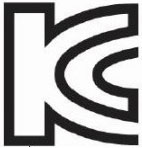
KC nameplate must include the following content.
①KC logo (with certificate number SUxxxxxxxx)
②Product name (must be expressed in Korean)
③Model name
④Voltage and frequency
⑤ Factory name
⑥Country of manufacture
⑦Double insulation mark "back" (if necessary)
⑧Year and month of production
⑨A/S after-sales service phone number (must be in Korea)
Other information
Technical information: voltage frequency 110V/220V/380V, 60Hz or 50Hz/60Hz, plug KSC8305
whether mandatory: mandatory
Certificate validity.
1. Mandatory safety certification ----- None, annual review to maintain the validity (template below)
2. Self-regulatory safety confirmation -----5 year
3. Supplier self-confirmation ----- no certificate, confirmation of permanent validity
Factory inspection requirements: mandatory safety certification requires the first factory inspection and annual audit
Licensee requirements: mandatory safety certification must be factory-holding, the other two types of certification factory/manufacturer/importer can hold a certificate.
MSIP Certification
Certification Introduction
Unlike many countries that have separate certification control according to the different requirements of EMC, wireless RF, and communication TELEC. Korea has integrated EMC/RF/TELECOM certification into MSIP certification for the convenience of management. The certification name of the Korean wireless communication certification has undergone the development from MIC to KCC, and then to MSIP.
The KCC certification is a mandatory certification for wireless telecommunication equipment and products implemented according to the Korea Telecommunications Basic Law and the Radio Wave Act, and later, because KC separated Safety and EMC, EMC was also included in the KCC certification. The KCC is responsible for the management of telecommunication products and has authorized the Korea Radio Research Agency (RRA) as its certification body to carry out specific certification of products. kcc certification is conducted by its predecessor, the MIC accredited Korean laboratory, which conducts compliance testing and the RRA issues type approval certificates.
Since July 1, 2013, the responsible unit for EMC/RF/TELECOM certification in Korea has been converted from KCC ( Korea Communications Commission ) to MSIP ( Ministry of Science, ICT & Future Planning ) of the Ministry of Future Creation Science in Korea. Accordingly, the beginning of the ID code in the KC LOGO will be changed from KCC to MSIP, but the rest is unchanged.
According to the category to which the product belongs, MSIP is mainly divided into the following three types of certification.
1. Conformity Certification: Wireless communication equipment, such as telephones, regulators, fax machines, etc.
2. Conformity registration: electrical appliances category.
3. Provisional certification Interim Certification: for the temporary absence of standard equipment
Product range
Basically includes all wireless communication products, as well as most of the electronic and electrical products covered by KC certification. Only some of them are listed here.
1. Automatic alarm receivers installed on ships
2. Automatic alarm telephone devices
3. Wireless beacons for emergency position indication
4. Wireless marine radar and automatic radar spotting equipment for ships
5. Wireless equipment for cell phone at sea
6. Wireless equipment for satellite mobile communication radio bureau
--------
Application process
1.Customers prepare samples and information, and submit the application to ITA
2. ITA submits the samples and information to KTL/KTC for testing
3. KTL/KTC conducts the test, issues the test report after the test is completed and submits the report to RRA, the Korean licensing body
4. RRA, the Korean agency, will audit the report and other application documents and issue MSIP certificate after there is no problem.
Logo requirements
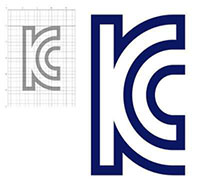
MSIP nameplate must include the following.
KC logo (with certificate number MSIPxxxxxxxxx)
Product name (must be expressed in Korean)
Model name
Factory name
Country of manufacture
Production year and month
Other information
Technical information: voltage frequency 110V/220V/380V, 60Hz or 50Hz/60Hz, plug KSC8305
whether mandatory: mandatory
Certificate validity: No validity
Factory inspection requirements: No
Requirements of the licensee: No
Korea Energy Efficiency System MEPS/E-standby/HECP
Certification Introduction
In order to popularize and expand energy-saving products, save global energy and reduce greenhouse gas emissions (environmental protection), and make consumers give priority to purchasing energy-efficient products, Korea has introduced an energy-efficiency certification system since the 1990s. The energy efficiency control organization is KEMCO (Korea Energy Management Corporation), and the testing organizations mainly include KTL and KTC. There are three main categories according to products and standards.
1、Energy Efficiency Class Marking System MEPS
Energy efficiency level labeling system is an obligatory system that classifies products into 1~5 levels according to energy efficiency and energy usage, and the lower limit of energy efficiency, i.e., the minimum consumption efficiency standard (MEPS : Minimum Energy Performance Standard), is applicable.
Since 1992, the Korean government has introduced a mandatory energy efficiency registration and labeling system to label products with the MEPS 1-5 rating. In order to expand the popularity of energy-efficient products, the energy consumption rate class labeling system imposes three obligations on domestic manufacturers (domestic) and domestic importers (import): (i) the obligation to label energy consumption rate classes; (ii) the obligation to declare products; and (iii) the need to comply with the minimum consumption rate standards, etc.
2、E-standby low power consumption system
The Korean government has also introduced the E-Standby certification system, which has been gradually made mandatory since 1999.
The standby energy-saving warning mark (yellow) is implemented for products that fail to meet the standby energy-saving standard, and products that do not meet the standard requirements need to be affixed with this mark. Conversely, if met then add the energy-saving mark (smile mark).
3. High Efficiency Energy Equipment System HECP
The Korean government introduced the voluntary High-efficiency Appliance Certification program in 1996, which is a certification system that evaluates the inspection results of energy efficiency and quality tests and requires that certain standards be met.
Product Scope
1.Range of products covered by MEPS, the Energy Efficiency Class Marking System (35 types).
Electric Refrigerator | Dehumidifier | Multifunctional electric water pump systems | Commercial refrigerator | Fluorescent lamps |
Electric refrigeration equipment | Cold and warm water machine | Ballasts for fluorescent lamps | Water warmers (gas) | Dehumidifier |
Kimchi refrigerator | Electric rice cooker | Ballast in type fluorescent lamp | Transformer | Electric blanket |
Air conditioner | Vacuum Cleaner | Three-phase induction motor | Window sets | Sleeping bed heater |
Washing machine | Electric Fan | Domestic boiler (gas) | TV set | Heat transfer plate |
Drum washing machine | Air purifier | Adapter/charger | Point heater | Electric bed |
Dishwasher | Incandescent lamp | Heating and cooling air conditioner | Electric heater | Electric radiator |
2. Standby low power consumption regime E-standby covers a range of products (22 types).
Computer | Photocopiers | TV sets | Microwave Oven | Automatic washing and drying commode |
Monitors | Scanners | Audio Equipment | Set-top box | Modem |
Printers | Laminator | DVD player | Visual doorbell | Wireless telephone |
Fax | Hand dryer | Recorder | Home Gateway | Automatic power saving control equipment |
VCRs | Servers | - | - | - |
3. Range of products covered by the High Efficiency Energy Equipment System HECP (41 types).
High illumination reflector for fluorescent lamps | LED guide light | Ballasts for sodium lamps |
Illumination automatic control lighting equipment | Converter for in-form LED light | Converters |
Exhaust heat recovery air exchanger | Converter in the inner type LED light | LED traffic lights |
Gas water heaters for industrial buildings | Vending machine | Direct Fire Absorption Type Plumbing |
Centrifugal spiral freezer | Ballasts for metal halide lamps | Single-phase induction motor |
Ventilator for water | Oil and water heater | Oil-burning water heater for industrial buildings |
Not fully listed... | - | - |
Application process
1.Documents and samples are submitted to KTC/KTL
2.KTC/KTL will conduct the test and issue the test report
3. KTC/KTL contact local agent/importer and register with KEMCO officially
4. Successful registration, KEMCO issues MEPS certificate and label design drawings
5. Importers affix energy efficiency labels
Note: Registration must be completed within 60 days after the issue of the report, otherwise the test report will expire and be invalid!
Labeling requirements
1. MEPS labeling for energy efficiency level marking system.
MEPS labels vary from product to product, the following are examples of more common products energy efficiency labels.
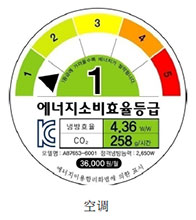
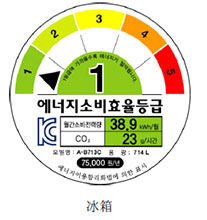
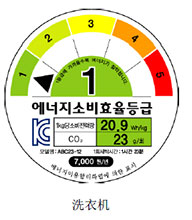
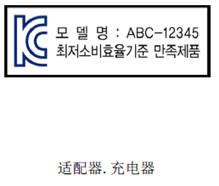
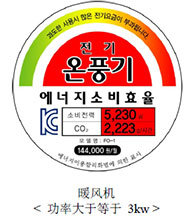
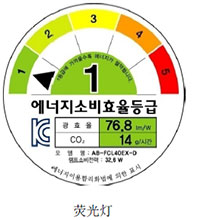
2. E-standby label for standby low power consumption system.
The E-standby warning sign (left) is a mandatory sign to be affixed to products that fail to meet the standby energy-saving standard, in order to alert consumers. In contrast, the energy-saving sign (right) is for products that meet the requirements of the standby energy consumption standards, voluntary can be added to the label.

3. High efficiency energy equipment system HECP label.
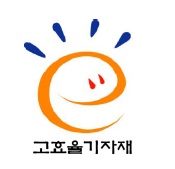
Other Information
Technical information: voltage frequency 110V/220V/380V, 60Hz or 50Hz/60Hz, plug KSC8305
whether mandatory: mandatory
Certificate validity period.
1、Energy efficiency class marking system MEPS: No expiration date
2、Standby low power consumption system E-standby: No expiration date.
3, high efficiency energy equipment system HECP: 3 years validity
Factory inspection requirements: None
Requirements for licensee: Must be declared by the local importer in Korea


 Telephone
Telephone  Contact
Contact